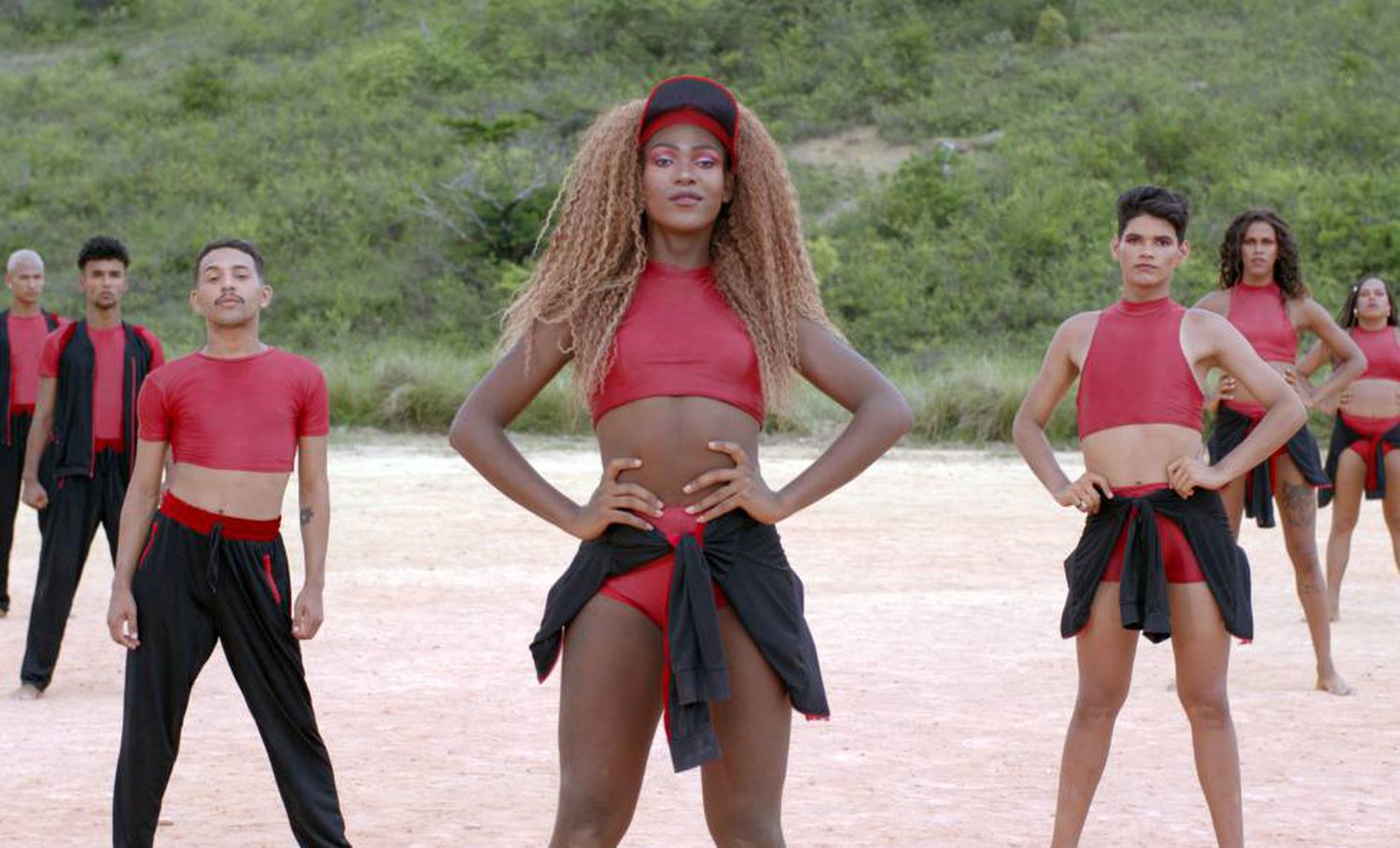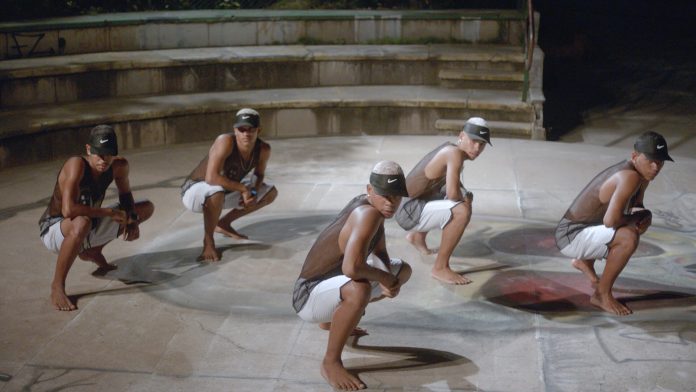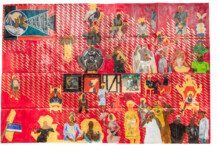There is a necessary debate, currently, about the relationship between the artist, the representations contained in his/her works and the concept that has been constituted as a “standpoint”, having Djamila Ribeiro as one of its protagonists.
The question is to think what is ethically correct, now in 2019, to make it clear if an artist or a white artist can portray, for example, indigenous issues, when there are many indigenous artists who can speak about their reality with much more propriety?
It is essential to think of Claudia Andujar and all her activism with the Yanomami, which, far from addressing an ongoing massacre since the 1970s, has made fighting it her central mission. Her radicalness goes so far as to make her photographic work really an extension of this dedication and a significant part of every sale of her work on this subject being passed on to the indigenous people. Before the term was formed, Andujar was in fact seeking to approach the indigenous standpoint in a radical way.
The representation of the real in contemporary art is an essential key to their own understanding and began when artists began to use cameras and video cameras in the 1960s and 1970s, which are incorporated into their repertoire of working instruments.
In fact, we saw an important movement: the departure from the protected space of creation as the studio for the search for contact with the other, with the things of the world, while pointing to the need to be willing to contaminate oneself. for these things of the world, for randomness and surprise. This was an important moment in the renewal of artistic language, hence experimentation. Undeniable to see how it is driven by the use of new technologies. Two artists used this procedure in an exemplary way: the American Vito Acconci and the French Sophie Calle.
In 1969, in Follow Piece, Acconci randomly selected people on the street and followed them, unbeknownst to them. The persecution occurred until they entered a private space, where the artist’s presence was not allowed. If a person entered a movie theater, for example, Acconci would also enter paying the entrance. These pursuits could last minutes or even hours, depending only on the other’s course.
For Acconci, who had a background in literature and was a critic of the market–based art system, this kind of action meant the very loss of the artist’s primacy over the work, as he declared “I am almost no longer ‘me’”. . What he presented as his final work, in this case, was a map of the city on which he marked the streets he passed, photographs of the people he followed unknowingly, observations and time stamps on each walk.
It can be clearly seen how this effort to leave the protected space of the studio really represents this desire to give up total control over the work and a need to observe the other through the use of instruments that are typical of journalistic practice, in the case of Acconci, the photographic camera, especially because his images follow the documentary style: there is no staging, the character does not even know that he is being photographed, thus composing a “real” portrait of this person.

Sophie Calle did something very similar in Paris ten years later, in 1979, but even more radically, when she goes after stalking people on the streets of the French capital until she is stubborn by one of them, who she calls Henri B., and you get to know at a party. There Calle discovers that he will travel to Venice and she decides to follow him secretly, recording, for two weeks, everything he does in the Italian city. The result is the series of photos and texts Suite Venitienne (Venetian Suite), in which she acts as a spy and analyst, making a series of lessons about the character in the written accounts. At the same time, this obsessed pursuit in a romantic city like Venice raises the issue of affection for the object.
In both works there are many elements that point to the essential characteristics of contemporary art, such as the refusal of the autonomy of art and the notion of representation, and, for that, the search for an effective experience, which in both materializes in sharing an experience. with the other. It is relevant here that, in both cases, procedures such as documenting actions in photographs and reporting objective data from each story come close to journalism practices. Another factor close to journalism is the exemption of both in seeking not to influence who they are pursuing, not being identified, just as the journalist should not influence the responses of their interviewees.
Art and journalism
If artists’ approach to the real in the early days of contemporary art already starts from the use of journalism’s own equipment and techniques – let’s remember that 50 years ago journalism had a better valued position than it does today – journalism also sought inspiration in art, especially in literature, at that time.
Throughout the history of journalism, a practice that aims to narrate facts as freely as possible, taking into account, obviously, all the limits and contradictions of what it means to make a cut of the real, many have been attempts to make use of fictional resources for a better approximation with what we can call here facts.
The so–called “new journalism” or literary journalism, as this approximation with literature is nowadays called, has a long history, both in the United States, where it is usually pointed out by journalists such as Truman Capote, Gay Talese, Norman Mailer and Tom Wolfe. , as in Brazil, with José Hamilton Ribeiro and Joel Silveira, thinking about the same period of the 1950s, 60s and 70s. They all used fictional resources, such as attributing what one of the subjects would be thinking without actually asking him that. However, based on dozens of interviews and observations. In Frank Sinatra is a cold published by Esquire in 1966, for example, Gay Talese makes a profile of the American singer, considered the best text about him, without interviewing him. His descriptions of the singer’s life, however, are so detailed and so contextualizing his attitudes that no interview becomes irrelevant.
Other journalists who participate in this aspect have even more radical practices, such as Hunter Thompson who did an immersion work, mixing himself with the characters he would write about, without identifying himself as a journalist. This is how he portrayed the American group of riotous bikers, Hell’s Angels, at the invitation of The Nation magazine, which resulted in the book Hell’s Angels – Fear and Delirium on two wheels. For more than a year, he lived with the radical bikers clandestinely, thus being able to write a very realistic text about their outlaw activities. Thompson himself called this style “gonzo journalism,” an ironic way of pointing out a contradiction in his own condition as a journalist who characterizes himself as a character, without publicly assuming, and remains there in a fairly ethically questionable zone. In Germany, journalist Hans–Günter Wallraff has a similar procedure, acting as an employee of the McDonalds fast–food chain, as a Turk working underemployment, and as a reporter for the hyped Bild–Zeitung newspaper. In all these cases he has published books, being the most famous Turk’s Head, on working conditions for immigrants in Germany.
Both Thompson and Wallraf seek to push the boundaries of journalism from literature inspiration, using procedures of fiction. In Brazil, Otávio Frias Filho (1957 – 2018) was inspired by this model to produce immersive reports in swing houses, the Oficina Theater and other experiences, which resulted in the book Queda livre, Ensaios de risco.

What about the standpoint?
These immersive experiences in journalism, even if carried out with many limits, do represent a realization of the need for empathy, that is, to be able to put oneself in the other’s shoes in order to have a broader view. From empathy to effective collaboration is a passage that can be seen in the work Swinguerra, by Bárbarw Wagner and Benjamin de Burca, which is on display in Venice, and should be seen in the pavilion of the São Paulo Biennale.
For his background in journalism, Wagner has much of his work being the result of a dialogue between documentary practices and art. Born in Brasilia, the artist graduated in Journalism from the Federal University of Pernambuco in 2003. For the next two years, she attended Brasilia Teimosa, the largest slum in Recife, portraying her residents in a very different way from the way these people’s images usually circulate. , usually victimized after a disaster. She built a series of images where these residents are at leisure, with empowered attitudes, sometimes even similar to how sensational magazines portray celebrities.
While the artist gives vision to a group marginalized by the media, she builds these images not only respectfully, but allows them to pose with a dignity that is not generally bestowed on them. To construct these images, even with advertising and fashion resources, it appropriates, thus deconstructing the typical image of the favela. Going public in 2005, the series quickly conquered the art system and has been featured in many exhibitions, possibly being one of the best representations of the social rise that took place in PT governments.
Since then, she has been working with German Benjamin de Burca, especially making videos in which she continues to give visibility to marginal groups such as evangelicals in Believers and Preachers 2014. In this video they portray the singers of the evangelical churches, inserting in a pop context, something close to Terremoto santo, a musical documentary with young people from Pernambuco’s Zona da Mata who dream of recording a gospel music video, shown at the Corpo a Corpo show, which opened the Moreia Salles Institute in São Paulo.
The universe of music was also approached in Estas Vendo Coisas about the tacky Recife scene, exhibited at the 32nd São Paulo Biennial, 2016, Uncertainty Living. In it, Wagner and Burca develop effective collaboration with the musicians portrayed in the work, as the script was written jointly with participants from Brega and the surrounding music video industry. Collaboration between the artists and their portraits has become common practice in more recent works, including Swinguerra, and not only the artists, but Eduarda Lemos, one of the central figures of the work, was also opening the Italian show. It is in gestures of this nature that it is clear how shared authorship actually becomes effective.
Talking about another, thus, is not a voyeuristic or illustrative attitude. It is commitment, something that had its first steps in the early works of Sophie Calle and Vito Acconci, although they follow the other, but without involvement. In Bárbara Wagner and Benjamim de Burca representing the other means an effective partnership of exchanges for the construction of the work, and for it to be a place of speech for who really should speak.








